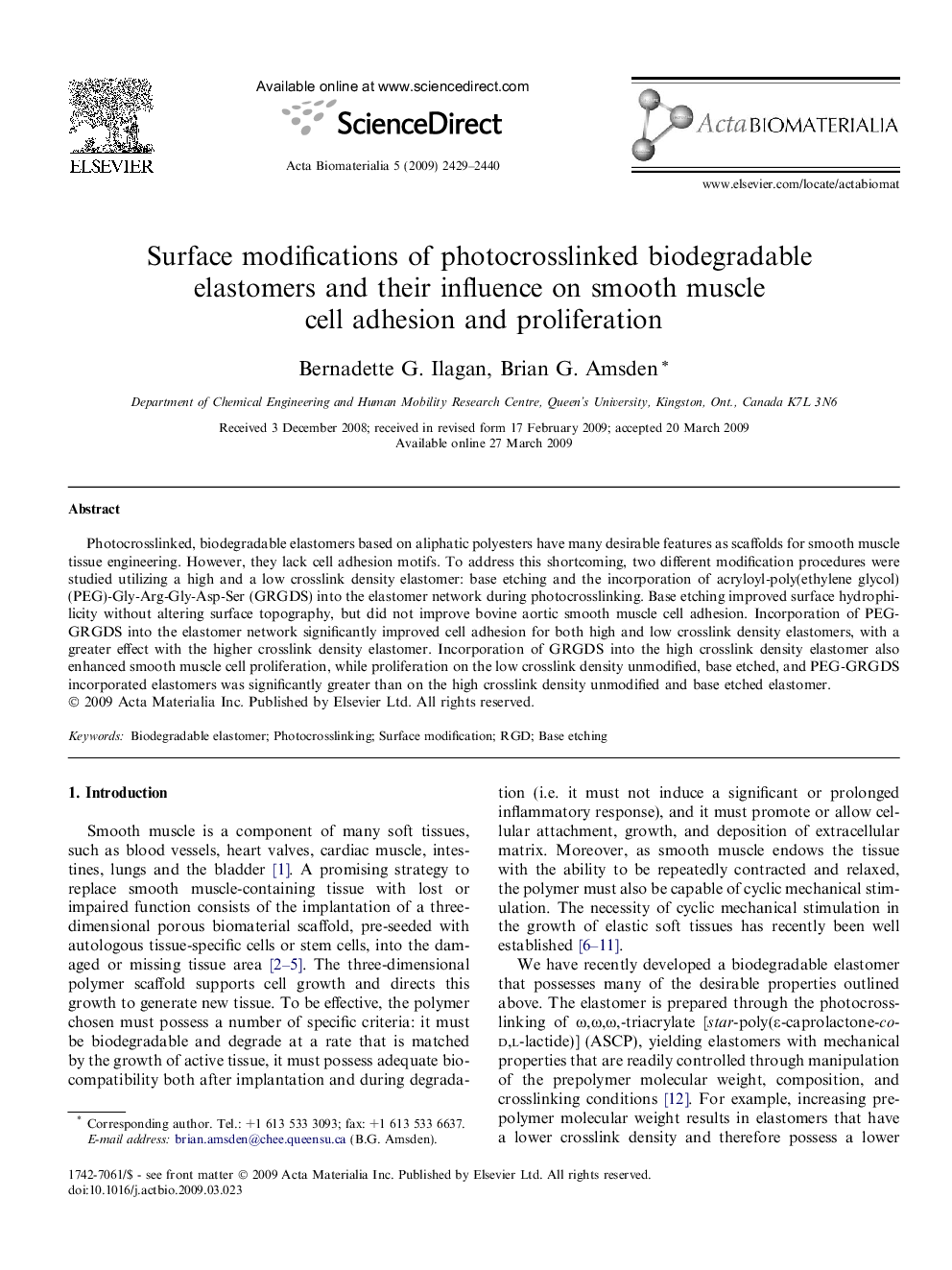| Article ID | Journal | Published Year | Pages | File Type |
|---|---|---|---|---|
| 1924 | Acta Biomaterialia | 2009 | 12 Pages |
Photocrosslinked, biodegradable elastomers based on aliphatic polyesters have many desirable features as scaffolds for smooth muscle tissue engineering. However, they lack cell adhesion motifs. To address this shortcoming, two different modification procedures were studied utilizing a high and a low crosslink density elastomer: base etching and the incorporation of acryloyl-poly(ethylene glycol) (PEG)-Gly-Arg-Gly-Asp-Ser (GRGDS) into the elastomer network during photocrosslinking. Base etching improved surface hydrophilicity without altering surface topography, but did not improve bovine aortic smooth muscle cell adhesion. Incorporation of PEG-GRGDS into the elastomer network significantly improved cell adhesion for both high and low crosslink density elastomers, with a greater effect with the higher crosslink density elastomer. Incorporation of GRGDS into the high crosslink density elastomer also enhanced smooth muscle cell proliferation, while proliferation on the low crosslink density unmodified, base etched, and PEG-GRGDS incorporated elastomers was significantly greater than on the high crosslink density unmodified and base etched elastomer.
